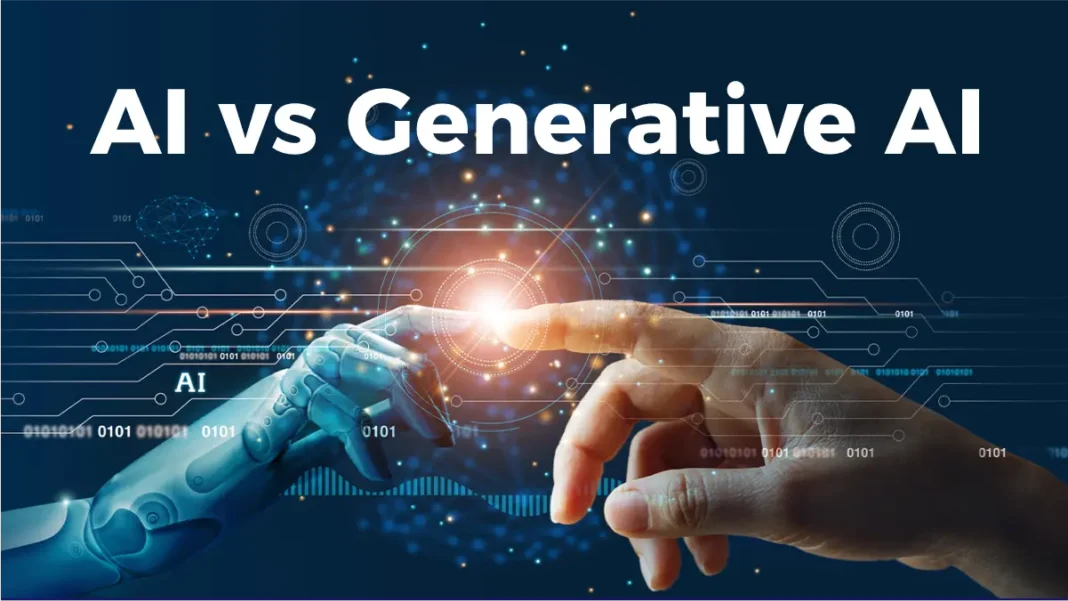In 2025, the conversation around AI vs Generative AI is no longer academic-it’s strategic. As digital marketers race to integrate intelligent tools into their workflows, understanding the nuances between traditional AI and generative AI is essential. From predictive analytics to content creation, these technologies are reshaping how brands engage, convert, and retain customers.
Let’s break down the differences, explore real-world applications, and uncover what marketers must know to stay competitive in this AI-powered era.
Understanding the Core: AI vs Generative AI Explained
Artificial Intelligence (AI) is a broad field encompassing systems that mimic human intelligence-think recommendation engines, chatbots, and fraud detection. Generative AI (GenAI), a subset of AI, goes a step further: it creates new content, such as text, images, audio, and even code.
| Feature | Traditional AI | Generative AI |
| Purpose | Analyze, predict, automate | Generate new content |
| Examples | Google Ads bidding, churn prediction | ChatGPT, DALL·E, Midjourney |
| Input/Output | Input → Decision | Prompt → Creative Output |
| Use in Marketing | Segmentation, personalization | Copywriting, image generation, video ads |
According to the 2025 AI Index Report by Stanford HAI, 78% of organizations now use AI, with generative AI attracting $33.9 billion in private investment-an 18.7% increase from 2023.
Strategic Impact: How AI and Generative AI Shape Marketing
1. Predictive vs Creative Intelligence
Traditional AI excels at crunching numbers and spotting patterns. It powers:
- Customer segmentation
- Predictive lead scoring
- Dynamic pricing
- Email send-time optimization
Generative AI, on the other hand, is the creative engine. It enables:
- Automated blog writing
- Personalized ad copy
- AI-generated product images
- Voiceovers and video scripts
A 2024 MIT Sloan study found that 64% of data leaders believe generative AI is the most transformative tech of this generation.
2. Workflow Automation vs Content Innovation
AI streamlines operations. GenAI reinvents them.
- AI: Automates repetitive tasks like tagging, reporting, and A/B testing.
- GenAI: Produces original content at scale, reducing creative bottlenecks.
The Australian Centre for AI in Marketing (ACAM) reports that 87% of marketers allocated budgets for GenAI in 2024, with 79% planning to increase that investment in 2025.
Skills, Ethics & Readiness: What Marketers Must Address
3. The AI Readiness Gap
Despite enthusiasm, many marketers are underprepared. ACAM’s 2025 Readiness Benchmark shows:
- 52% of teams are still in the beginner phase
- Only 8% have reached advanced maturity
- 61% of CMOs cite lack of AI skills as a major barrier
This gap isn’t just technical-it’s cultural. Embedding AI into strategy requires leadership, training, and ethical frameworks.
4. Environmental and Ethical Considerations
Generative AI’s environmental footprint is significant. A 2025 BERA report highlights:
- GenAI models can use up to 30x more energy than traditional search queries
- Water and mineral use for cooling and chip production is rising
- Ethical concerns around bias, transparency, and misinformation persist
Marketers must weigh innovation against sustainability and responsibility.
People Also Asked: AI vs Generative AI in Marketing
Q1: Is generative AI still a novelty in 2025?
No. A McKinsey survey shows that 40% of organizations now use GenAI in more than two business functions.
Q2: What’s the biggest difference between AI and generative AI?
AI analyzes and predicts; generative AI creates. The former optimizes decisions, the latter produces content.
Q3: How is generative AI used in digital marketing?
From writing SEO articles to generating product visuals, GenAI accelerates content production and personalization.
Q4: Is generative AI replacing traditional AI?
Not exactly. They’re complementary. GenAI handles creative tasks, while traditional AI manages data-driven decisions.
🧭 Conclusion: Navigating the Future of AI in Marketing
The line between AI and generative AI is more than technical-it’s strategic. Marketers who understand the distinction can better align tools with goals, whether optimizing campaigns or crafting compelling narratives.As Douglas Nicol, co-founder of ACAM, puts it:
“This isn’t about catching up with technology-it’s about redefining marketing to lead with confidence, creativity, and accountability.”


